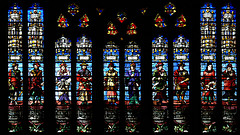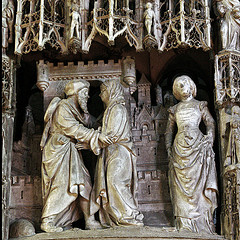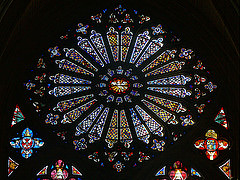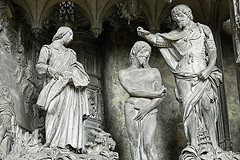Renaissance
The first sequence of sculpture around the choir screen, starting at the western end of the south ambulatory, is the work of Jehan Soulas from 1519-1521. Sculpted from the hard limestone from the Tonnerre quarry, they consist of scenes from the Gospel of James, depicting the annunciation of the Virgin Mary to Joachim and St Anne, the birth of Mary, and the presentation of Mary in the temple.
 Monuments or memorials to children in English churches were extremely rare until the late 18th and early 19th century. In the 16th century one can find the occassional child tomb amongst the aristocracy, such as that of the The Noble Impe at St Mary's Warwick, but otherwise children rarely appear to have warranted memorials in their own right.
Monuments or memorials to children in English churches were extremely rare until the late 18th and early 19th century. In the 16th century one can find the occassional child tomb amongst the aristocracy, such as that of the The Noble Impe at St Mary's Warwick, but otherwise children rarely appear to have warranted memorials in their own right.
 The choir stalls of the collegiate church of Saint-Jean-Baptiste at Montrésor form one of the most eloquent ensembles of Renaissance woodcarving in Touraine. They were made around 1530-1540, when Imbert de Batarnay, seigneur of Montrésor and counsellor to four French kings, endowed the new collegiate foundation he had created in 1521.
The choir stalls of the collegiate church of Saint-Jean-Baptiste at Montrésor form one of the most eloquent ensembles of Renaissance woodcarving in Touraine. They were made around 1530-1540, when Imbert de Batarnay, seigneur of Montrésor and counsellor to four French kings, endowed the new collegiate foundation he had created in 1521.








